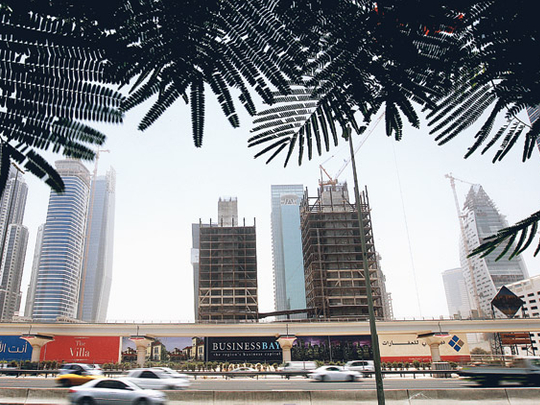
A spate of serious fires in the UAE have focused a great deal of public concern and attention on modern building facades and the safety of the materials used in their construction. However, this level of concern may be unfounded.
Today's high standards of fire safety lend much to the lessons of history. Looking back at one of the world's most famous fires, The Great Fire of London in 1666, the extensive devastation was attributed in part to the city's narrow streets and the close proximity of wooden buildings. This allowed flames and heat from one building to spread quickly to adjacent buildings. In fact, it is said that one of the strategies used by King Charles II to stop the fire spreading was to knock down perfectly good buildings to create a ‘fire break'.
While this may have been a drastic but necessary measure at that time, the basic principle is still applied by today's city planners. Building codes around the world, including those in the UAE, require that buildings are spaced at a prescribed limit to prevent a fire spreading from one building to another. If buildings are closer than these stated limits, then the facades of these buildings are required to be fire-rated; in this context, they are required to have a ‘fire resistance' performance.
‘Fire resistance' is a very specific term in the fire industry and refers to the ability of facades, as well as walls, floors, ceilings and doors, to resist the spread of fire to adjacent rooms or space. Fire resistance performance is always measured in terms of ‘time' and is used by designers to ensure that potential fire spread is quantified. This is an important consideration when designing a building so that, should a fire occur, people have time to vacate the building, and property damage is limited. The fact that people escaped from the recent fires in the UAE will have been, in part, due to the fire resistance of sections of the building.
Code development
The fire resistance of some elements of the building is therefore very likely to be necessary. However, it is not usually the whole of the facade, but only parts of it.
‘Reaction-to-fire', on the other hand, looks principally at the materials themselves and how they burn. Whether or not the facade is required by regulators to have a fire-resistance rating, designers must also select materials that limit the spread of flames and the creation of smoke. Note that, based on the reports, it was mainly the reaction-to-fire properties of the materials used in the buildings in the recent fires that allowed the fire to spread. It was not the fire resistance of the facade.
The right type of testing, usually conducted on a full-scale mockup of two floors of the facade, can prove the performance of both the materials used, and their fire stopping capabilities. The UAE codes make reference to these tests and the authorities are discussing widening the list of applicable standards. Code development is always an ongoing process.
Clearly some of the materials used on building facades in recent fires in the UAE were not of a suitable standard, leading manufacturers, architects and builders to spend significant time and resources on fire testing, not only to meet safety obligations but also to push the boundaries of materials and design.
To help reduce the instances and impact of fires, it is critical that large and complex buildings throughout the UAE have well-thought-out fire-safety strategies. These will ensure that fire safety forms an integral part of the building's basic design and construction. From the means of escape to fire-stopping design and the suitability of materials, all these should be of equal consideration to the cost and aesthetics of design.
While public concern is understandably calling for whole facades to be fire resistant, this is usually not necessary, provided that the performance of the materials in relation to fire resistance plus reaction-to-fire are well tested, and that their use is considered as part of an integrated design strategy.
Andy Dean is a General Manager with Exova Warringtonfire, the world's leading fire safety specialists.










